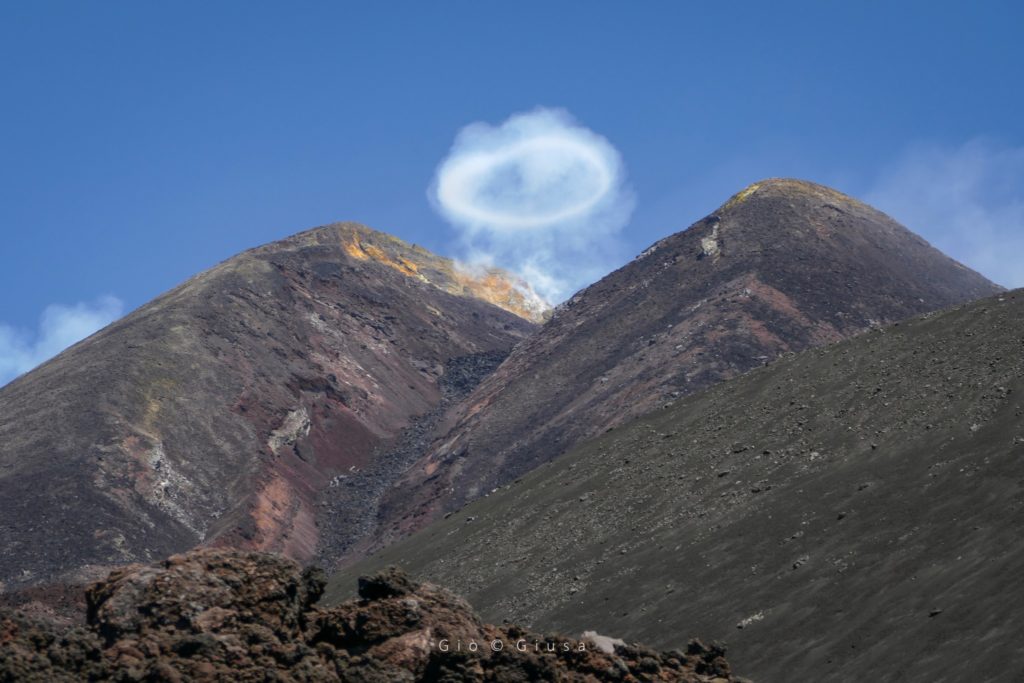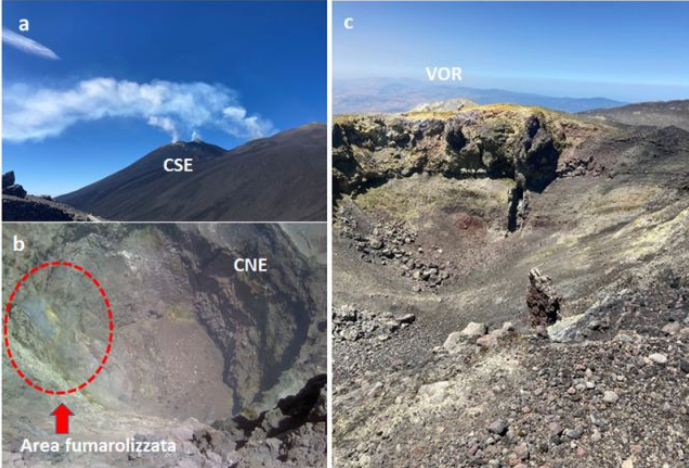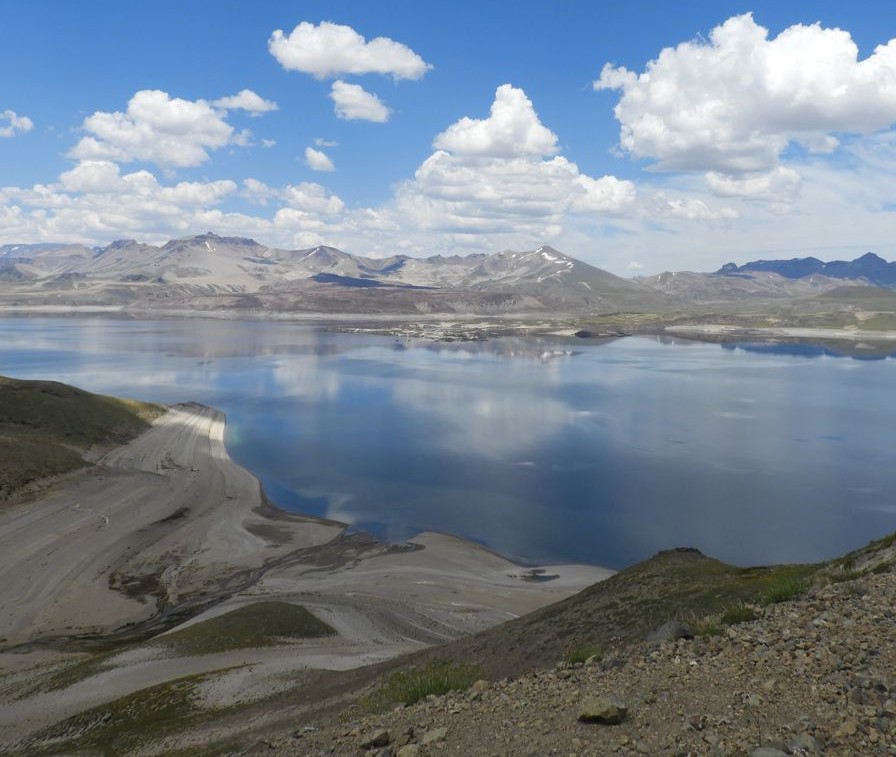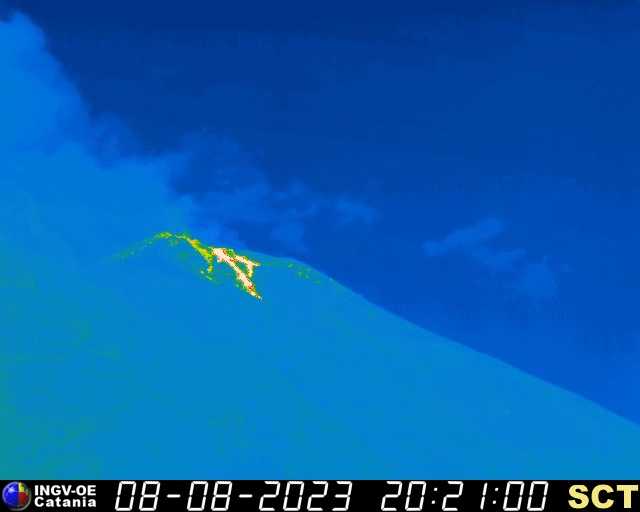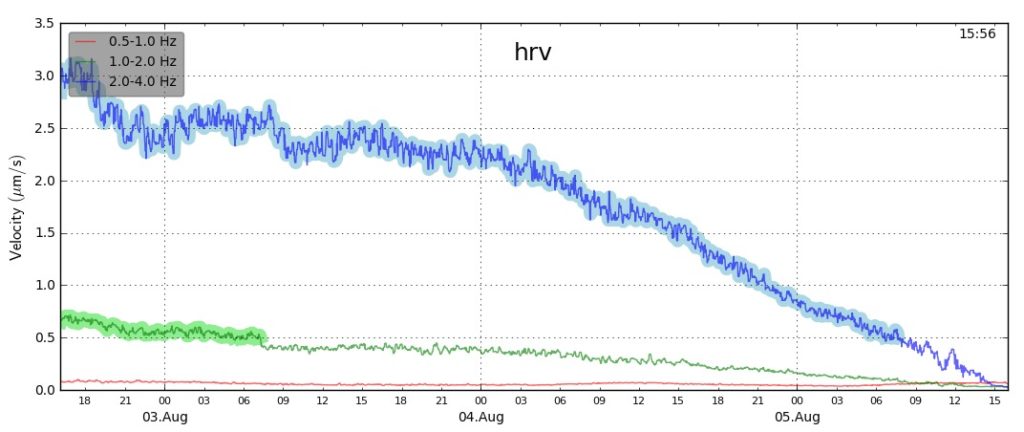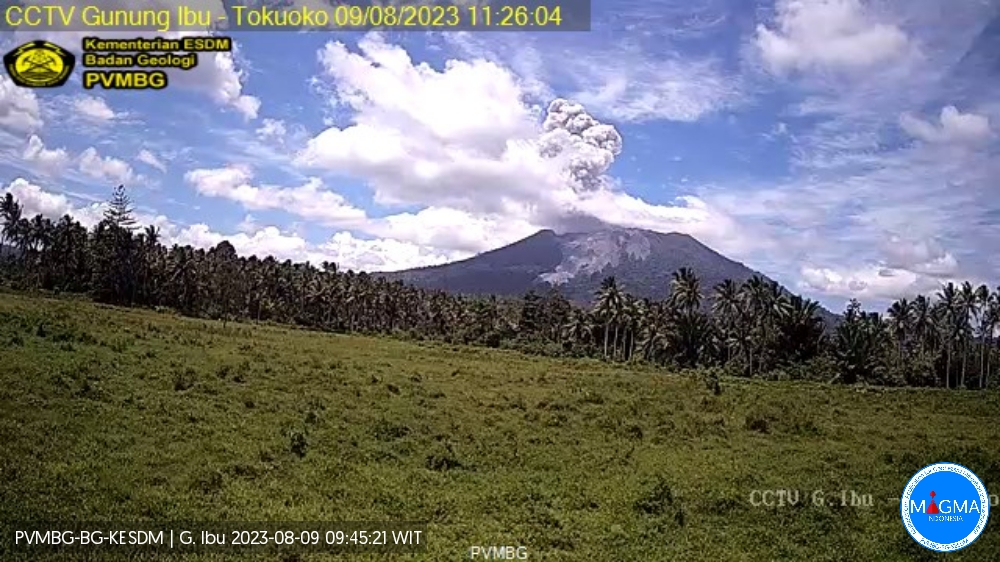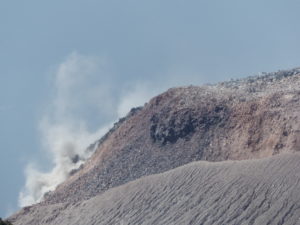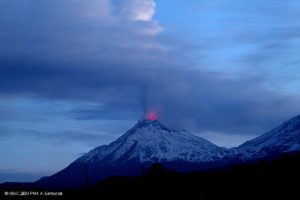August 09 , 2023.
Italy / Sicily , Etna :
WEEKLY BULLETIN, from July 31, 2023 to August 06, 2023, (issue date August 08, 2023)
ACTIVITY STATUS SUMMARY
In the light of the monitoring data, it is highlighted:
1) VOLCANOLOGICAL OBSERVATIONS: Degassing activity of the summit craters, in particular continuous degassing at the Bocca Nuova crater (BN) and at the Southeast crater (CSE).
2) SEISMOLOGY: Low seismic activity due to fracturing; the amplitude of the volcanic tremor remained mainly at average levels.
3) INFRASOUND: Weak infrasonic activity.
4) GROUND DEFORMATIONS: No significant variation is reported.
5) GEOCHEMISTRY: So2 flux at an average level.
CO2 flows show a sharp drop, reaching low values.
There are no Helium isotope ratio updates.
The partial pressure of dissolved CO2 does not show any significant variations.
6) SATELLITE OBSERVATIONS: Thermal activity observed from the satellite was generally weak.
VOLCANOLOGICAL OBSERVATIONS
During the week, monitoring of Etna’s activity was carried out through the surveillance cameras of the INGV – Osservatorio Etneo (INGV-OE) and from observations acquired during various inspections carried out by INGV-OE staff in the summit area.
During the week of observation, the volcanic activity of Etna was characterized by a variable level degassing of the summit craters, mainly at the Bocca Nuova crater (BN) and the Southeast crater (CSE). In particular, during the inspection on August 2, it was observed that the continuous pulsating degassing of Bocca Nuova is produced by the two active vents inside the crater, BN1 and BN2, mainly from BN1, and from the degassing pit that formed from the second half of July 2023. During the inspection, sporadic roars produced by the hot gases released under pressure and rare emissions of fine reddish ashes were heard, the latter being produced by the BN1 following the takeover by the gases emitted of old materials residing inside the vent.
(a) degassing the CSE; (b) fumarolic degassing of the CNE; (c) Obstructed bottom of the Voragine. Photographs taken by INGV-OE staff during the August 2 inspection.
The Southeast Crater (CSE) fed a continuous degassing of the two vents located in the eastern sector and a weak degassing of the active fumaroles along the western edge of the crater.
The northeast crater (NEC) showed weak degassing from isolated active fumaroles, located on the northern inner wall of the crater.
The Voragine (VOR) always remains blocked and inactive.
Source : INGV.
Photos : Gio Giusa , INGV.
Chile , Laguna del Maule :
Special Report on Volcanic Activity (REAV), Maule region, Laguna del Maule volcanic complex, August 08, 2023, 09:02 a.m. local time (mainland Chile)
The National Geology and Mining Service of Chile (Sernageomin) announces the following PRELIMINARY information, obtained through the monitoring equipment of the National Volcanic Monitoring Network (RNVV), processed and analyzed at the Volcanological Observatory of the Andes del Sud ( Ovdas):
On Tuesday August 8 at 08:38 local time (12:38 UTC), the monitoring stations installed near the Laguna del Maule volcanic complex recorded an earthquake, associated with rock fracturing (volcano-tectonic type, VT).
The characteristics of the earthquake of greatest magnitude recorded for the moment after its analysis are as follows:
ORIGINAL TIME: 08:38 local time (12:38 UTC)
LATITUDE: 36.135°S
LONGITUDE: 70.517°E
DEPTH: 1.7 km
LOCAL MAGNITUDE: 3.5 (ML)
Comments:
Following the main event, other earthquakes with similar characteristics of lower energy were recorded. At the time of issuing this report, other low-energy volcano-tectonic earthquakes were recorded.
The volcanic technical alert remains at the Yellow level.
Source : Sernageomin.
Photo : Sernageomin.
Italy , Stromboli :
Statement on Stromboli activity, August 08, 2023, 21:08 (19:08 UTC).
The National Institute of Geophysics and Volcanology, Osservatorio Etneo, reports a strong explosion.
Further updates will be communicated soon.
Statement on Stromboli activity, August 08, 2023, 21:42 (19:42 UTC).
The National Institute of Geophysics and Volcanology, Osservatorio Etneo, communicates that at 19:06 UTC, a major explosion occurred from the northern zone of the crater, the products of which fell from the terrace of the crater spilling over the upper part of the Sciara del Fire. From the surveillance cameras, no product fallout was observed in the Pizzo Sopra la Fossa area.
Contextually, at least two lava overflows developed from the North Crater area. The lava fronts are currently in the upper sector of the Sciara del Fuoco.
From a seismic point of view, at 19:05 UTC, all Stromboli stations recorded a seismic transient associated with an explosion of greater intensity, which was followed in the following minutes by an increase in the average amplitude of the tremor volcanic which has reached very high levels.
The deformation data measured by the high frequency GNSS network does not show any significant variations associated with the event.
Further updates will be communicated soon.
From the thermal surveillance camera (ROC), the material emitted poured in the direction of the Sciara del Fuoco.
This event is consistent with a major explosive event.
After the explosive event, no significant changes in explosive activity and monitored parameters are recorded.
Source : INGV. LGS.
Photos : INGV. LGS.
Iceland , Litli Hrútur :
The activity in the Reykjanes Peninsula has entered a new phase . Updated 8 August 2023
The activity in the Reykjanes peninsula has entered a new phase. At the end of last week it was possible to see the crater, feeding the eruption in Litli-Hrútur, shrinking and reducing its size. At the same time, starting on midnight on August 4, volcanic tremor started declining in a stable manner as measured by many stations close to the eruption site. At midday August 5, the tremor detected at the station located at Hraunsel-Vatnsfell (HRV), right at the eruption site, decreased further reaching pre-eruptive levels (see the image below). No activity has been observed at the crater since then. Seismic activity in the area continues, but it is now much less intense compared to the beginning of the eruption. The last thermal anomaly detected by satellite (MODIS) was on August 6.
It is still too early to declare that the eruption at Litli-Hrútur is over, though it appears evident that a new phase of the eruptive activity in the Reykjanes peninsula has started. It is premature to anticipate if the seismic activity will increase again and a new eruption will begin in the future, or not. Only time will tell.
Most importantly, there are still hazards in the area around the eruption site. The hazard area as issued by the Icelandic Met Office is still valid and there will be no changes until a new hazard assessment will be completed at the end of this week.
Considering the absence of eruptive activity, the IMO has suspended daily forecast for gas pollution, but visitors to the eruption site need to be aware that persistent lava degassing is still occurring, and events of gas pollution cannot be excluded in the vicinity of the eruption site.
Source : IMO.
Photos: mbl.is , IMO.
Indonesia , Ibu :
G. Ibu presented an eruption on Wednesday August 09, 2023 at 11:36 WIT with an ash column height observed at ± 1000 m above the summit (± 2325 m above sea level). The ash column was observed to be gray with thick intensity, oriented to the east. This eruption was recorded on a seismograph with a maximum amplitude of 28 mm and a duration of 82 seconds.
VOLCANO OBSERVATORY NOTICE FOR AVIATION – VONA
Issued : August 09 , 2023
Volcano : Ibu (268030)
Current Aviation Colour Code : ORANGE
Previous Aviation Colour Code : orange
Source : Ibu Volcano Observatory
Notice Number : 2023IBU026
Volcano Location : N 01 deg 29 min 17 sec E 127 deg 37 min 48 sec
Area : North Maluku, Indonesia
Summit Elevation : 4240 FT (1325 M)
Volcanic Activity Summary :
Eruption with volcanic ash cloud at 02h36 UTC (11h36 local).
Volcanic Cloud Height :
Best estimate of ash-cloud top is around 7440 FT (2325 M) above sea level or 3200 FT (1000 M) above summit. May be higher than what can be observed clearly. Source of height data: ground observer.
Other Volcanic Cloud Information :
Ash cloud moving to east. Volcanic ash is observed to be gray. The intensity of volcanic ash is observed to be thick.
Remarks :
Eruption recorded on seismogram with maximum amplitude 28 mm and maximum duration 82 second.
Source et photo : Magma Indonésie


